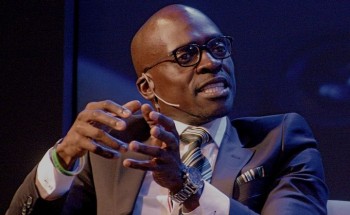How the capture cancer spread
 SA Council of Churches’ Unburdening Panel report provides vital clues to the personnel and sequence of events that resulted in the Guptas' almost unbelievable capture of SA's state-owned companies. They are President Jacob Zuma and then public enterprises minister Malusi Gigaba (pictured left). Eskom, Denel and Transnet were their prime targets, according to News24.
SA Council of Churches’ Unburdening Panel report provides vital clues to the personnel and sequence of events that resulted in the Guptas' almost unbelievable capture of SA's state-owned companies. They are President Jacob Zuma and then public enterprises minister Malusi Gigaba (pictured left). Eskom, Denel and Transnet were their prime targets, according to News24.There are two names and two dates that stand out in the SA Council of Churches’ Unburdening Panel report into state capture.
The first name is that of President Jacob Zuma, the Gupta family’s entry point into grabbing control of the South African state and its entities. The second name is Malusi Gigaba, whose appointment as minister of public enterprises led to whole-scale changes in parastatals and the installation of Gupta-aligned directors.
The standout dates are April 2009, the inauguration of Zuma and the beginning of the pay-off for the Guptas’ investment in the unlikely president. The other is November 2010, Gigaba’s arrival at public enterprises, where he replaced an uncooperative Barbara Hogan.
The cast of the state capture movie is vast and varied. The perpetrators and the casualties range from high-level politicians to bureaucrats to executives to private businessmen. The scene of the crime is the entire government machinery, stretching from the fiscus to the coffers of state-owned enterprises (SOEs).
Zuma
In his characterisation of state capture, the SA Council of Churches’ general secretary Malusi Mpumlwana had this to say: “Careful analysis makes the case for the following observatory trends of inappropriate control of state systems through a power elite that is pivoted around the president that is systemically syphoning the assets of the state.”
While the Guptas have been the drivers and prime beneficiaries of state capture, the president – a self-proclaimed friend of the Guptas – has been the key to its success. Zuma kick-started the takeover by the Guptas as soon as he got into office, facilitating their access to ministers, senior officials and SOE executives. His big move was in October and November 2010 when he removed Hogan as minister after she refused to bow to the Guptas’ whims. During this period, the Guptas offered senior MP Vytjie Mentor the ministry – while Zuma was present in the family compound – on the condition that she played ball. When she fobbed them off, Gigaba was promoted from deputy minister of home affairs to the ministry.
Zuma’s Cabinet reshuffles and appointments have been designed to facilitate easy passage for the Guptas into the state machinery. The most notable moves included the replacement of Ngoako Ramatlhodi with the inexperienced, but Gupta-friendly, Mosebenzi Zwane at mineral resources, and the firing of Nhlanhla Nene and the abortive appointment of Des van Rooyen, another Gupta acolyte. Zuma succeeded at Treasury when he fired Pravin Gordhan and replaced him with Gigaba, the man who got the capture ball rolling at the department of public enterprises.
Gigaba
The youthful Gigaba’s arrival at public enterprises was widely welcomed. Smart, energetic and capable, he was seen as the right person to be the overlord of the vast expanse that are SOEs. No one suspected anything ulterior in Zuma’s move. In no time, Gigaba wielded the axe on SOE boards, infusing them with Gupta associates. What was to follow in subsequent months and years was a systematic takeover of SOEs with Gupta-aligned individuals and the diversion of contracts to their entities.
Getting Gupta business partner Iqbal Sharma, a department of trade and industry official, on to the board one month after taking over was an important first step for Gigaba. But getting him to chair the board proved more difficult as he was scuppered by Cabinet. Yet, he managed to get him to preside over a his newly created Special Tender Board, whose task was to oversee contracts above R2.5bn.
His installation of Brian Molefe to head up Transnet in February, just three months after The New Age exclusively predicted this would happen, was a major coup for the Guptas. Together with Anoj Singh – yet another Gupta associate – they signed off on deals and began the R300bn, seven-year rail network renewal project.
THE SCENES OF THE CRIME
Transnet
Together with Eskom, Transnet boasts one of the biggest balance sheets and capital budgets on the continent. This makes it an inevitable target for any capture effort.
With the capture of Transnet having commenced in earnest as soon as Gigaba appointed his people to the key positions, it gained momentum when a R300bn renewal project was announced.
In October 2013, Transnet appointed consultants McKinsey & Company to advise on deal structures and funding for a R50bn locomotive tender.
McKinsey agreed to subcontract part of the work to Regiments. Thereafter, the original fixed contract for R35m ballooned to nearly R100 million, with Molefe and Singh merrily signing off.
Then, in February 2014, things got more interesting. One month before the tender was awarded to four train builders, Sharma (who adjudicated the tender process) and his business partners acquired a stake in VR Laser Services (ostensibly via VR Laser Property), an engineering firm that is positioned to benefit from the Transnet locomotive tender through the supply chain process. His partners were Rajesh Gupta and Duduzane Zuma.
After the R50bn locomotive tender to four train builders was awarded, the Guptas moved on Regiments, seemingly in a bid get their hands on the consulting contract. When they failed, they bought into advisory firm Trillian, after which a material portion of Regiments’ work was redirected to them. Trillian was paid about R170m for unexplained consulting work, while it also received tens of millions for the same pieces of consulting work that Regiments had done.
Evidence has also emerged of how the proceeds of these contracts have been spirited out of the country through various Gupta-linked shell companies.
Eskom
Eskom has seen the most frenetic action in the state capture roll-out – with the efforts affecting the utility, the mining industry from which it sources coal, and the policy area where the nuclear deal was being hammered out.
The Unburdening Panel report points to “regulatory shakedowns”, whereby ministers and private business interests – in this case, the Gupta entities – illegitimately use policy decisions and instruments to run less-favoured businesses out of town.
Although it had been used before he got to minerals and energy, Zwane summed it up best after he was appointed: “We are clear that if companies cannot mine safely, they should not be mining at all, and should allow other potential holders, who respect the laws of the country, to continue mining.”
But this apparently did not apply to Gupta-owned Tegeta Exploration and Resources, Tegeta Resources and Idwala Coal. The Guptas mined in sensitive wetlands without water licences and compulsory anti-polluting plans. Directives by the departments of water affairs and environmental affairs were just ignored. Despite the Guptas’ Idwala Coal violating water and environmental regulations, Eskom chair Zola Tsotsi announced that it had awarded the company a R500m contract. When this was resisted by Eskom executives who were concerned about the illegal mining operations, Zuma’s Cabinet sacked the Eskom board, ostensibly because they weren’t firm enough with their minions.
Tegeta’s Brakfontein mine received the same kind treatment, securing a 10-year supply contract worth R400 million, despite not having a water licence. When five laboratory tests showed that the coal was not of a good enough quality, the contract was suspended. But after five days, the suspension was lifted by group executive for generation, Matshela Koko, who then went on to suspend the work of the laboratories, as well as the employees who did the tests. The Guptas were now free to continue to rake in the loot, which would amount to R4bn by the end of the 10-year term.
At the opposite end of the scale, Eskom actively drove Glencore’s Optimum Holdings and Optimum Coal out of business in order to ready it for a takeover by the Guptas.
When Molefe arrived at Megawatt Park in April 2015 from Transnet, where he had performed dutifully, one his first major acts was to target Optimum.
He insisted on reversing an agreement to renegotiate a 22-year, R150-per-ton contract, despite losses and the threat of job losses. Eskom then imposed a R2.1bn fine on Glencore for poor coal, ironically in the same month that it lifted the suspension on the Guptas’ Brakfontein mine.
When financially stricken Optimum began retrenching, the Guptas put in a R2bn offer. Once the company was in business rescue, Zwane made that now infamous trip to see Glencore boss Ivan Glasenberg. Days after Zwane’s return, Glencore agreed to sell Optimum to the Guptas. Mission accomplished.
Denel
In July 2015, Public Enterprises Minister Lynne Brown – who does not have overt ties to the Guptas, but blindly takes direction from her boss – overhauled the Denel board. She installed Gupta loyalist Dan Mantsha as chair, who then appointed his own ally, Zwelakhe Ntshepe, as chief executive officer.
In January 2016, Ntshepe announced the formation of Denel Asia, jointly owned by Denel and VR Laser Asia, owned by the Guptas and Duduzane Zuma, and registered in Hong Kong.
The purpose of the Denel deal seems to have been to give the Guptas access to Denel’s valuable intellectual property to develop and sell military products to the Asian market.
In a move that hammered yet another nail in his coffin, Gordhan called out the formation of Denel Asia as illegal in terms of the Public Finance Management Act, as neither he nor Brown had given the necessary authority.
Ironically, the dissolution of VR Laser Asia was one of Gigaba’s first orders, a move seen as a way of “proving” that he is not captured and acts in the country’s interests.
















